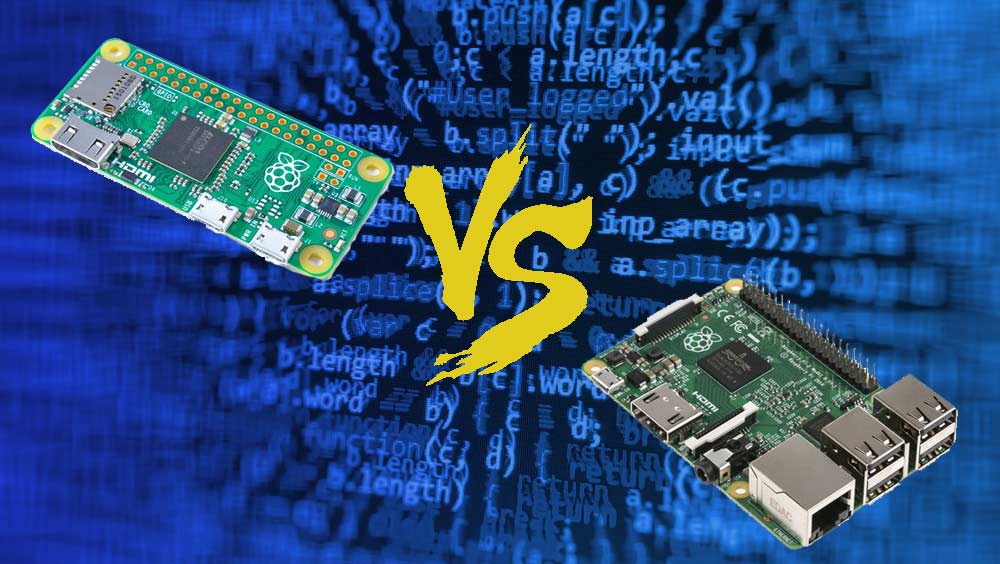Raspberry Pi Zero vs Raspberry Pi 2 Model B
We put the £4 microcomputer head-to-head with its bigger brother to see whether cheapness = value for money


The Raspberry Pi Zero is a little computer that's made a big impact. It's the latest single-board device from The Raspberry Pi Foundation, which has been stunning the world by continually making computers smaller and cheaper than anyone had thought possible.
It's so popular, in fact, that when the official Raspberry Pi magazine gave away free units with every copy, the issue sold out inside of a day. Plus, we were very impressed with it ourselves as our full stand-alone review shows. With tech-heads clamouring to get their hands on the Raspberry Pi Zero, we put it head-to-head with its predecessor to see whether or not it's really better than the Raspberry Pi 2 Model B.
Specs and hardware
The Raspberry Pi Foundation is touting the Zero as having "twice the utility of the Model A+", and there's no denying that. However, it's slightly more evenly matched when it comes to the B version.
Running at 1GHz, the CPU has a speed edge over its older sibling. On the other hand, it's only got one core, whereas the Model B has a quad-core SoC. The B also beats the Zero in the RAM stakes, with a 1GB allocation compared to a mere 512MB. This makes it much more capable for multi-tasking, especially the kind used in traditional desktop computing.
Aside from that, the main difference is in the ports. As is to be expected from a device that's significantly smaller than the average business card, the Pi Zero isn't exactly overflowing with ports and connections. In fact, it's got a mere three one USB On-The-Go (OTG) port for data, a micro USB port for power, and a mini HDMI slot for display.
In this arena, the Raspberry Pi B is the much better option, with four full-sized USB ports, a full-sized HDMI output, an audio jack and even an Ethernet port. The two are equally matched in terms of GPIO pins, with 40 apiece.
Price
Naturally, the Raspberry Pi Zero has the edge here the fact that you can virtually pick it up for pocket change is one of the reasons the device sold out within hours. However, while the Pi Zero's big brother is more than three times the price of its newest sibling, it's not bad value by any stretch of the imagination.
In fact, it almost evens out once you factor in the cost of all the associated peripherals. As the Pi Zero's diminutive size only allows for a USB OTG port, you'll need to shell out a few pounds for an adapter cable and then around 10 for a powered hub if you're wanting to use it as a proper computer.
Because it's also lacking the Ethernet port seen on larger models, you'll also most likely want either a USB Ethernet adaptor (around 10) or a USB WiFi adapter (5-10). This pushes the total cost of the Pi Zero to between 20 and 25, and into the same ballpark as the Model B.
Availability
This is the real kicker. As with the earliest runs of the Raspberry Pi, the Zero has proved so popular that demand has outstripped supply by a huge margin. The Foundation is now racing to print more units, but judging by previous experience, the Raspberry Pi Zero is going to be hard to come by for the foreseeable future.
The Raspberry Pi 2 B, by contrast, is in more than ample supply. Distribution partner RS Components has over 52,000 in stock at the time of writing, with more in the hands of other resellers. This makes the model B an excellent fallback option for those who need their microcomputing fix right now.
Verdict
While the Raspberry Pi Zero is currently the hottest ticket in town, consumers may want to consider whether they're being beguiled by its petite frame and cheapness. It's a fantastic device and a marvel of engineering, but its lack of inputs and slimmed-down RAM limit its utility for many applications.
Unless you're really strapped for cash or need the form-factor stripped down to the absolute bare minimum, the Raspberry Pi 2 B remains the more capable if slightly more expensive option.
This article was first published on 30/11/2015 and has since been updated, most recently on 17/02/2016.
Get the ITPro daily newsletter
Sign up today and you will receive a free copy of our Future Focus 2025 report - the leading guidance on AI, cybersecurity and other IT challenges as per 700+ senior executives
Adam Shepherd has been a technology journalist since 2015, covering everything from cloud storage and security, to smartphones and servers. Over the course of his career, he’s seen the spread of 5G, the growing ubiquity of wireless devices, and the start of the connected revolution. He’s also been to more trade shows and technology conferences than he cares to count.
Adam is an avid follower of the latest hardware innovations, and he is never happier than when tinkering with complex network configurations, or exploring a new Linux distro. He was also previously a co-host on the ITPro Podcast, where he was often found ranting about his love of strange gadgets, his disdain for Windows Mobile, and everything in between.
You can find Adam tweeting about enterprise technology (or more often bad jokes) @AdamShepherUK.
-
 Cleo attack victim list grows as Hertz confirms customer data stolen
Cleo attack victim list grows as Hertz confirms customer data stolenNews Hertz has confirmed it suffered a data breach as a result of the Cleo zero-day vulnerability in late 2024, with the car rental giant warning that customer data was stolen.
By Ross Kelly
-
 Lateral moves in tech: Why leaders should support employee mobility
Lateral moves in tech: Why leaders should support employee mobilityIn-depth Encouraging staff to switch roles can have long-term benefits for skills in the tech sector
By Keri Allan